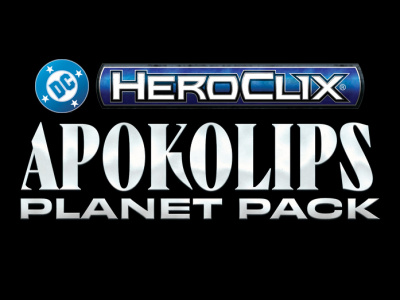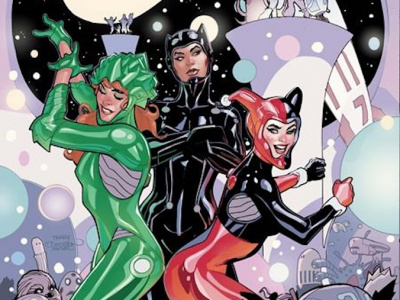 ICv2 got a chance to talk to DC Co-Publishers Dan Didio and Jim Lee last month in our annual conversation about the state of the market and DC’s place in it. This year’s conversation comes at a critical time for DC, as it re-launches its entire line and expands its digital strategy. In Part 1, we talk about the market conditions that led DC to its decisions, the reactions to its price cuts, and the full line relaunch. In Part 2, we talked about the connections between DC and Warners on things like the full line relaunch, and the different aspects of event fatigue. And in Part 3, we talked about the move to digital release at the same time as print, comics for kids, and media drivers of sales.
ICv2 got a chance to talk to DC Co-Publishers Dan Didio and Jim Lee last month in our annual conversation about the state of the market and DC’s place in it. This year’s conversation comes at a critical time for DC, as it re-launches its entire line and expands its digital strategy. In Part 1, we talk about the market conditions that led DC to its decisions, the reactions to its price cuts, and the full line relaunch. In Part 2, we talked about the connections between DC and Warners on things like the full line relaunch, and the different aspects of event fatigue. And in Part 3, we talked about the move to digital release at the same time as print, comics for kids, and media drivers of sales.What’s your overall view of the market for comics and graphic novels and the market for DCs, and how has that changed over the past year?
Dan Didio: It looks the money that’s going into the direct market business has been remaining relatively flat, although we have seen erosion in the number sales of books that we’ve been putting out. That may have to do with the price changing or people shifting their interest from purchasing periodicals to collected editions or to whatever else is out there. But we have seen a general softening in the market in regard to periodic sales.
What do you attribute that to?
Didio: You could attribute that to several things. You could attribute it to people shifting their purchasing from periodicals to collected editions, to the graphic novels. You could have people that might be falling out of the business because of the economy. You have people who might be shifting to digital space and might be purchasing digitally instead. Or, which is the worst thing of them all, they might have lost interest because the material isn’t their holding their attention anymore.
Jim Lee: And I’ll throw one more in there: digital piracy. The fact that so many books—every book now—is available on BitTorrent the day of release. There are definitely people who are reading these comics, who we believe are keeping up with the hobby, but are doing it in the very gray or black market arena.
Has anything changed in mass channels over the last year?
Didio: There were challenges in the last year because of the changes that took place with Borders in the marketplace, but to be perfectly honest our numbers are up in the mass market over-alll in conjunction with graphic novel sales.
What about Walmart, Target, supermarkets, drugstores—anything changing in that channel?
Didio: We’re constantly looking for ways to get into those channels, but there’s a lot of challenges along the way.
Lee: We had a couple of initiatives that launched this year or are about to launch where we’re trying to pinpoint and target new mass market outlets. So it’s something that we are continually working on and hope to expand going forward.
We’re about six months into DC’s price rollback to $2.99 on your periodical line. How do you assess the results of that rollback?
Didio: I find it successful. While we didn’t show increased sales because of it, I believe that we didn’t have the level of erosion that would have occurred if we had decided to push our books to the higher price point. From my standpoint, it’s important for us to be as available as possible, at the best price possible to as many people. Especially given some of the challenges to the economy and some of the challenges our fans may be facing.
Lee: I think it also laid the groundwork for what we’re doing in September. We knew at that time that we had plans for September, and we knew that if we were going to go wide and broad with our campaign and messaging, we have to really present the comics in most affordable way possible. And $2.99 is a much better price point for existing, or bringing in new readers, or even lapsed readers than a $3.99 price point. That said, I would present it as a challenge to the fans: look, if this is meaningful to you, please support it, please show us that it makes a difference because the history of comics has been one of price inelasticity, where fans could not be induced to buying something at any price, and yet were willing to pay a very hefty price for books that they absolutely love. It’s not necessarily the best or healthy approach for the industry. We should really have a situation where being able to hold the price points down should show benefits in sales. It has reduced erosion or the rate of erosion; that said, I would love to see fans embrace it more and show us that it makes a difference.
Looking at that decision from the outside, there would be at least a short-term revenue hit, because you’re selling the same product at a lower price, and it would take a lot to make up that dollar volume in increased piece volumes. So we’re led to the question: was the sales erosion so dramatic and so concerning that you really felt like this was something you had to do in order to preserve the audience you had and keep them from continuing to be reduced in numbers?
Didio: There were some times where we were seeing as much as double digit erosion. What you also find is that people were more accepting of the higher price point on the better selling, more popular product. But it was starting to take a hit on some of the marginal material. I believe as a comics publisher, you have to make all your books as accessible as possible. You can’t just worry about selling your top books, but you really need to have a full and diverse line. And by holding the price, we were able to keep our line as diverse as possible. I think that’s one of the benefits of what we saw here.
Turning to the next major events we have coming up, these are obviously huge steps DC is taking. Can you explain for our readers, why are you re-launching the DC line in September?
Lee: There were a number of things that we wanted to achieve in September, but the primary focus was really updating and modernizing the entire DC universe line of characters. And we did it on a very selective basis, based on what we thought was working or not creatively. At the end of the day to make some major changes to iconic characters such as Superman we really feel that, aside from a spike in sales in September that we’re going to have some very long term dividends pay off on that by taking some bold opportunities on the character and really place him where he needs to be within the firmament of superheroes, which is at the top. The overall driving force behind September was to make the characters more relevant; to give people a better jumping on point; to really present the DC universe to this current generation of readers, setting the stage for the future generations to come.
Sort of implicit in that is an acknowledgement that the DC characters as they have been handled before this modernization were not a fit for this current generation. How do you describe that disconnect between where the audience is and where the characters are before this re-launch?
Didio: You have to understand that a lot of our characters were created in the 30s and 40s and then again in the later 50s and early 60s. They were created with a particular style, a particular sensibility, a particular pop culture in mind, if you want to use that term. But when they were created, they really matched the style and tone in the world around them. We think and we believe that the core conceits of our characters remain true. There are certain things about the Superman legend and lore, and Batman, and Wonder Woman, all of them, that resonates from generation to generation, but what we need to do is be able to contemporize the world around them—the stories, the tone, the look—so that they feel fresh for a new audience as well.
One of the things we can say and do when we talk about erosion is that we can sit here and say that these are the characters and how they were in the ‘30s and ‘40s and that’s the way we’re going to stick with it and we can watch people just age out of our books, or we can constantly revise it and tell those stories for new generations. If you see Batman, probably one of our most enduring and lasting characters, you see him change from generation to generation and by doing so, you see what the success and health of that franchise and line is.
Click here for Part 2 of the Interview.







